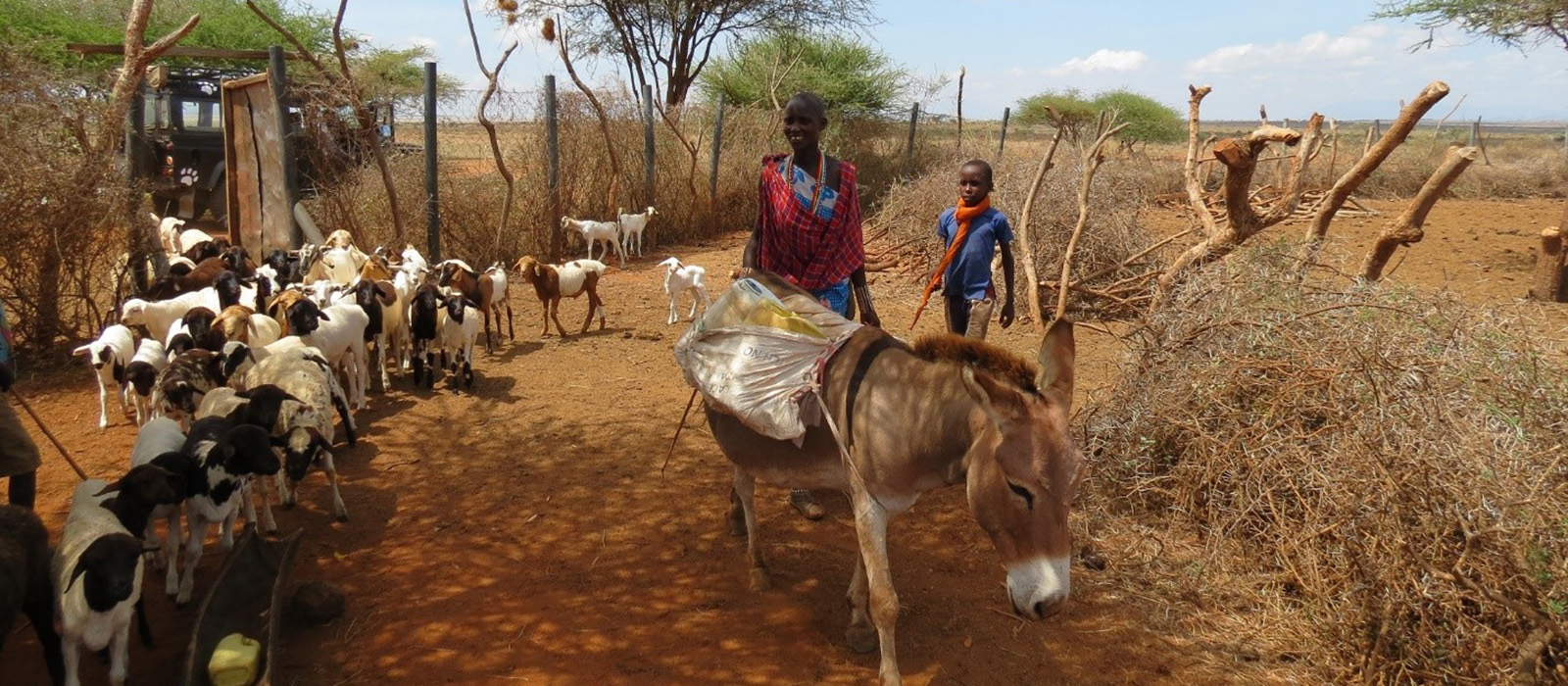Everybody needs good neighbours in Kenya
21 May 2022
EVERYBODY NEEDS GOOD NEIGHBOURS
Our Head of Conservation Dr Nikki Tagg and Born Free Kenya’s David Manoa have published an important paper on bomas in Oryx – The International Journal of Conservation.

Born Free’s Conservation team, led by Head of Conservation Dr Nikki Tagg and Pride of Amboseli Conservation Manager David Manoa, with Conservation Manager Penny Banham and our entire Pride of Amboseli team have published an important scientific paper in Oryx – The International Journal of Conservation.
The article presents the results of Born Free’s study into the drivers of boma disrepair in the Amboseli region, demonstrating some interesting findings about the social pressures around maintaining these important enclosures, reinforced to protect livestock from predators including lions.
The number of lions in Kenya has rapidly reduced from 10,000 in the 1980s, to only 2,500 today, with an estimated 141 lions living in the Amboseli Ecosystem. Also in the Amboseli Ecosystem, >75% of people derive their livelihoods from livestock. With increasing land-use change, resources for all animals are restricted, and many carnivores, including lions struggle to find prey. Inevitably, livestock are taken by lions, lions are then persecuted and killed as a result, and life can be very difficult for all concerned, as both people and wildlife struggle for survival.
The Born Free Foundation has worked in Amboseli since 2010, implementing a simple yet effective programme to mitigate this conflict. The team works with pastoralists to reinforce their traditional acacia-thorn ‘bomas’ within which they corral their livestock at night, to fortify the structures using chain-link fencing, metal posts and doors, which cannot be penetrated by carnivores in search of an easy meal.
Since the start of the programme, the team has constructed over 360 ‘predator-proof bomas’, protecting >100,000 heads of livestock and helping secure the livelihoods of >7,500 people. Our predator-proof bomas are shown to be 91% effective at preventing carnivore incursion.
Moko Kupere, a Maasai pastoralists living in Olgulului who’s traditional boma was recently upgraded to a predator-proof boma, said: “The lions and hyenas have taken my livestock for many years, and they don’t say thank you! Me, I want to say thank you to Born Free for accepting to upgrade my predator-proof boma.”
Engagement of the boma owner is key to the long-term success of our programme – if predator-proof bomas are not maintained, they may lose their integrity, enabling carnivores to break in. Given the numerous pressures on pastoralist families – including more frequent and prolonged droughts potentially leading to loss of livestock, and therefore wealth – many things might discourage or prevent a predator-proof boma owner from ensuring upkeep.
Born Free looked at several potential drivers of boma upkeep, including the distance of the boma from the nearest national park; the extent of conflict in the immediate area; the size, age or materials used in constructing the boma; the number of livestock or people living within it; the density of traditional bomas in the immediate surroundings; and the distance to the nearest neighbouring predator-proof boma.
Some of our findings surprised us. For example, we predicted more livestock in a boma to lead to more damage – we expected more animals coming into contact with the chain-link sides of the boma to directly lead to more damage. We thought this would be reflected in the analysis as more damage is simply harder to fix – due to time or cost. However, our results indicated the opposite – fewer livestock led to more damage. We suggest that this might be because fewer animals are able to move around more, and possibly faster, so contact with the fencing would cause more damage. Alternatively, a more subtle reason could be that, given livestock are currency for the Maasai pastoralists, with fewer livestock, a predator proof boma owner has a reduced financial capacity, and is less able to repair damage and maintain his or her boma.
We were not able to fully explore the possible influence on boma upkeep of the extent of conflict surrounding the boma. This was because we only had access to conflict data from a restricted part of the landscape so we could not include it as a variable in our main dataset with predator-proof bomas across the entire ecosystem. We would expect higher rates of conflict to translate to greater pressures on people thus encouraging them to maintain their predator-proof bomas, in a bid to keep lions out. A future study will examine this in more detail.
However, our study has revealed interesting insights into possible social drivers of boma maintenance. Those living in closer proximity to other predator-proof bomas were more likely to maintain their own predator-proof boma. This might be because predator-proof boma owners share skills and tips that they have learnt during construction and training, or perhaps they team up and assist each other with the physical aspects of boma maintenance, thus relieving some of the difficulties of doing so. Alternatively, the reason might be less about neighbourly comradery, in a ‘keeping up with the Jones’s’ type of peer pressure: if one predator-proof boma owner sees the effectiveness and integrity of his neighbour’s boma, this may encourage him to maintain his own to the same or higher standards, in a bid to not be outdone.
Whichever subtleties of human nature underlie this observation, we plan to explore the effect in more detail. If we can fully understand this important requisite of the long-term sustainability of our programme, we can apply it to help ease the pressures off pastoralists and protect the lions living in the landscape. For, of course, the lions of the landscape are their neighbours too.
The article ‘Drivers of predator-proof boma disrepair in the Amboseli Ecosystem, Kenya’ is available in Oryx—The International Journal of Conservation.
